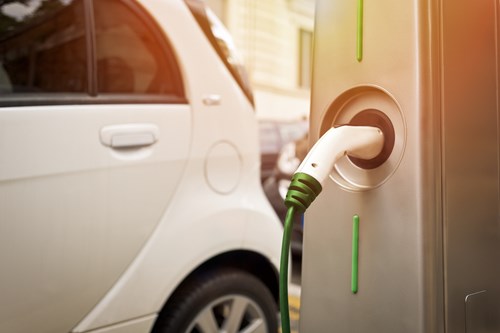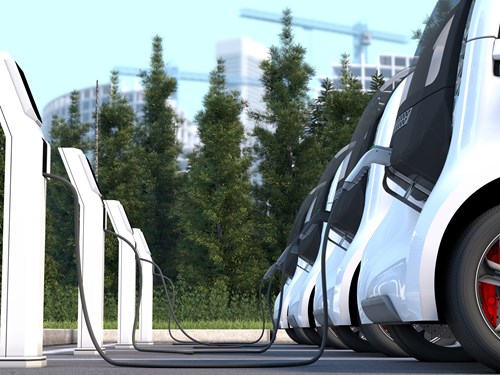Australia Set To Be Last In Race To Electric Car Domination
Posted
on Thursday, 23 August 2018
by CarTakeBack

Electric vehicles are becoming more and more popular, with global sales estimated to reach 2 million in 2019 (Forbes).
Typically, we’re early adopters for new technology but in this instance, we’re trailing behind the worldwide trajectory. In 2017, there were a mere 1,123 electric cars (WhichCar), sold here in Australia – only 0.09% of the market share. Just to give you a comparison, electric cars made up 52% of new car sales in Norway (Reuters).
Why are we behind?
We need better financial benefits
According to Australia’s Electric Vehicle Council, half of Australians would buy an electric car with a greater economic incentive. Although our state governments are working to reduce stamp duty on electric cars, it’s still not enough.
These are the stamp duty and registration discounts in place (based on a $60,000 electric vehicle):
| State |
Stamp Duty & Registration Discounts |
| ACT |
$2,110 |
| NSW |
<$250 |
| NT |
$40-$80 |
| QLD |
$660 |
| VIC |
$100 |
Source: ClimateWorks Australia
Again, let’s compare against the advanced Norwegians - they exempt electric vehicles entirely from stamp duty and high taxes - plus slap on higher taxes for any other vehicles. What’s more, they offer electric car drivers free chargers, free ferry rides and toll road exemptions.
The ACT government are pioneering a change for Australia and have cemented themselves as policy leaders. As well as offering the highest stamp duty reductions, they’re reviewing whether to allow zero-emission vehicle drivers in bus and transit lanes. The largest uptake of new electric cars is in the ACT state, demonstrating that stronger incentives can boost numbers.
We’re worried they’ll run out of battery
With only a few hundred public charging stations across Australia, this is understandably a concern.
However, the number of charging stations across Australia is growing rapidly – increasing 64% between 2017 and 2018. Also, some models on the market such as Renaults can already travel 350K without needing a charge. In fact, Australia’s Chief Scientist believes that by 2025, electric cars could travel 1,000km without needing to be recharged.
Find your nearest charging stations here.

We don’t make our own… yet
Currently, we’re reliant on the industry importing electric vehicles into Australia from other countries - we don’t manufacture our own electric cars. Nor does the government offer much in the way to incentivise a change to either of these.
At the start of 2018, there were only 476 charging stations across the whole country, providing a significant lack of infrastructure to support investment.
However, one company are set to hopefully revolutionise the market later this year. ACE Electric Vehicles are planning the first Australian range of electric cars. Their release date is set for late 2018, with a plan for two more in 2019.
The first models are priced below $40,000. They’ll begin with just assembly in Australia, but if sales hit 10,000, there’s a chance all production will be carried out here.
There aren’t enough to choose from
The aforementioned lack of infrastructure to support low-emission vehicle investment has also lead to a shortfall in models on the market.
The Electric Vehicle Council have released a guide to all of the electric vehicles in the Australian market today. As you’ll see - compared to standard car models - there are a substantially lower amount to choose from. We know electric cars are cheaper to run than conventional petrol cars, but the majority of vehicles available are priced at over $60,000 in the first place.
However, the future is bright. Choice on the market is set to increase with an extra 9 new models available in the next 1-2 years. With more variety on the market, there’ll be lower cost options for consumers and hopefully a surge in electric car drivers.
Will Australia follow the electric car revolution?
A common theme runs through our reasons for the low electric car uptake – price and infrastructure. While more needs to be done to bring the cost of vehicles down and increase charging facilities, we can see steps are being taken towards a greater adoption on the Australian roads.
ACT is leading the incentive shift, charging stations are growing rapidly, battery life is improving and by the end of 2018 Australia’s own range of electric cars should have launched.
Most importantly, our governments are announcing initiatives. According to ClimateWorks Australia, there have been numerous policy developments across state and government levels that ‘will help to address barriers regarding recharging concerns and consumer awareness’. Plus, the majority of Australian state governments ‘either announced or are developing an overarching electric vehicle policy framework or strategy’.
These are all steps in the right direction to catching up with our Norwegian friends and protecting our planet.